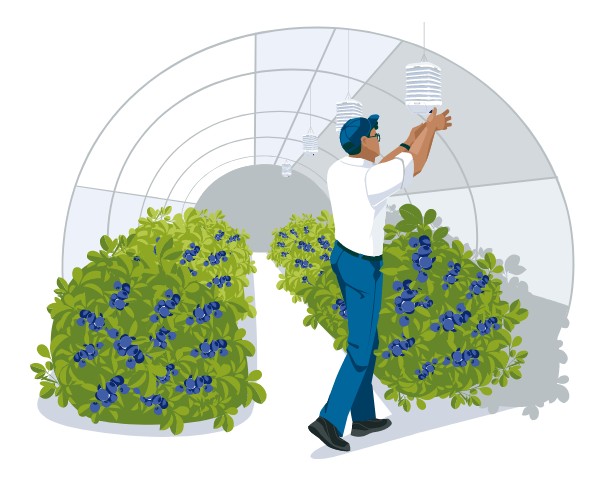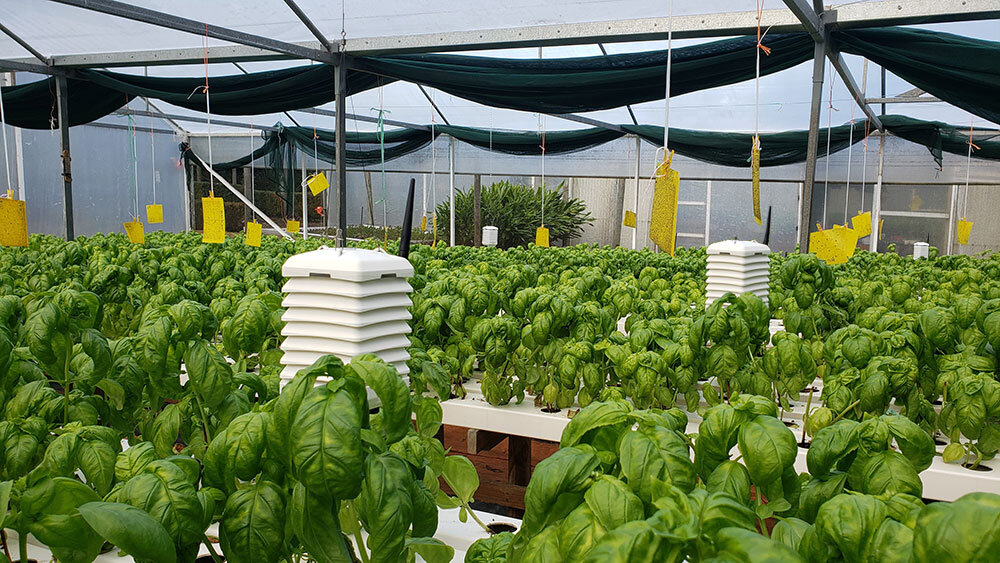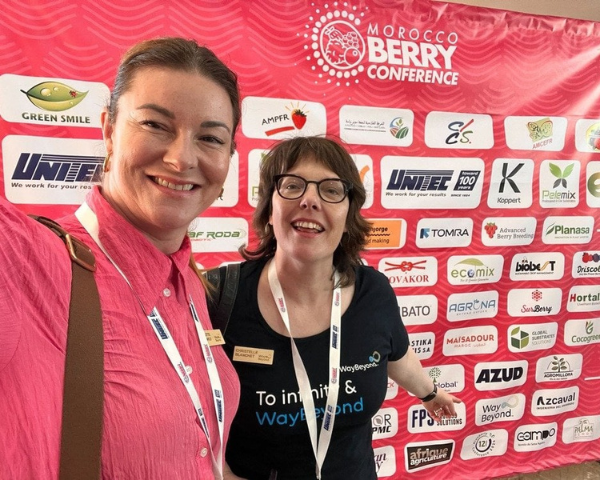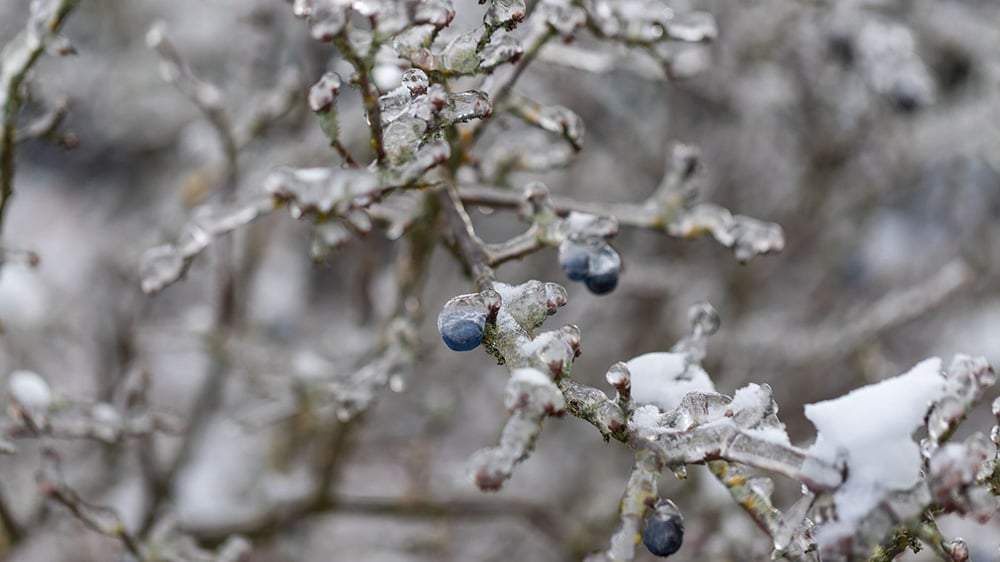
- CASE STUDY
- BLUEBERRY
- CROP MANAGEMENT
African Blue: real-time climate and plant health visibility improves crop management
With over 470 ha of blueberry production, African Blue needed to unify farm data to improve crop...
17.03.2021 | 3 min read
For Agritech company WayBeyond the solution was simple. Yet they had to question why no other companies had approached the problem in this way before.
Their target market: commercial growers, require frequent and detailed climate data to get the best from their crops. In a greenhouse environment, keeping the fine balance of temperature, humidity, and other factors is the key to consistently producing good quality, high yield harvests. This data is also vital in helping farmers mitigate pest and disease outbreaks that can damage crops.
The first problem WayBeyond sought to solve was a matter of coverage: agricultural farms have several vast greenhouses – each one roughly the size of a football pitch – and yet often these farms have only one climate sensor per greenhouse. While this sensor is sophisticated and delivers accurate temperature and humidity readings, its singular instance means it is restricted in delivering an accurate picture of climate variations that occur across such a large growing area.
The second problem was one of location: these single sensors are often installed above a crop in a fixed position. But disease issues that affect fresh produce usually begin inside the canopy of a crop, not above it – thus fixed-position sensors are limited in their ability to reveal potential disease issues, often until it’s too late.
The third problem WayBeyond describes as “data-density” i.e. the concentration of readings useful to the grower from one location. Typically only measurements of temperature and humidity are recorded with sensors. These provide an adequate but far from comprehensive picture of the growing environment.
The FarmRoad sensor network captures 6 types of climate data and displays it as heat maps, line graphs or tables. Farmers can also set alerts to notify them when environmental conditions fall outside normal parameters.
WayBeyond’s solution was to develop a wireless sensor network. The network comprises of multiple sensor units. FarmRoad's sensor solves the coverage issue by being installed in clusters of four to six across the greenhouse area. This provides a more comprehensive view of climate by collecting readings from multiple locations.
As well as taking standard environmental measurements of temperature and humidity, the sensor additionally measures carbon dioxide levels, PAR and RAD (two types of light important to growers) and barometric pressure. Additionally, the unit supports two other sensors useful to growers: plant temperature sensors and soil/substrate moisture sensors which plug into the base. With this capability FarmRoad delivers greater data density to provide farmers with a fuller picture of conditions inside their greenhouse.
One example of FarmRoad’s effectiveness is how it improved the fortunes of a herb farm in New Zealand. The Herb Patch is a commercial grower of 20 types of herbs in greenhouses covering 8 acres (3.2 hectares). The farm had suffered repeated outbreaks of the fungal disease Botrytis in their crops and the loss was affecting their bottom-line.
Despite experiencing outbreaks in previous years, pinpointing the cause was proving difficult. Without being able to identify the contributing factors leading to the outbreak, finding a solution was impossible.
The FarmRoad sensor network was deployed over a three month period to monitor the conditions and to gather data to provide insights so a response could be formulated.
Analysis showed that the greenhouse was experiencing prolonged periods of high humidity coupled with lower temperatures. This was creating optimal conditions for the disease to take hold. Moreover, the data was able to show these occurrences a full three weeks before any visual signs of the disease were reported by the farm team. The farm manager revealed that 40% of the crop in one greenhouse was infected and had to be removed to prevent further spread.
The financial impact of 40% crop loss in a single greenhouse reverberates deeply throughout a farming operation. Loss of revenue, cost of new seedlings, cost of labor to remove infected plants and the cost of labor to clean, disinfect and replace with new seedlings in this instance added up to USD$6,820. Botrytis was also evident in 2 other greenhouses. However, the true cost is not only measured in dollars as loss of customer confidence due to lack of supply may affect business reputation and relationships in the longer term.
By harnessing the FarmRoad Bluetooth wireless sensor network, farmers receive a richer picture of the status of their crops. FarmRoad monitors environmental data (both real-time and historic) 24/7 and so allows early detection of conditions that may lead to pest or disease outbreaks.
WayBeyond were one of the first to use Bluetooth technology in the agricultural sector and were able to harness the power of Bluetooth 5 to connect the units over distance. While Bluetooth is typically known for short range connectivity (e.g. to connect a mouse to a keyboard) WayBeyond were able to engineer a solution that could connect at a distance of 1.4km with direct line of sight.
The FarmRoad sensor is also battery powered. Growers usually have to replace batteries in sensors every 3-4 months but WayBeyond wanted their customers to avoid this inconvenience. The sensor sleeps for almost a minute, then wakes, collects the latest sensor readings, transmits them to the gateway then returns to sleep. By engineering the sensor using Bluetooth Low Energy Coded PHY, WayBeyond were able to optimise the sensor for power usage and extend battery life to almost 12 months.
To do this Waybeyond conducted extensive testing with Bluetooth to find a satisfactory balance between battery life and range. Building materials like concrete and steel naturally impact range, but WayBeyond discovered crop type and thickness also played a part. Test setups were created for growing environments varying from indoor greenhouse operations with dense vegetation to outdoor orchards with large open spaces.
During experimentation it became clear that the error correction abilities of Bluetooth Low Energy Long Range (CODED_PHY) decreased error rates significantly. WayBeyond managed to keep power consumption during sleep to an absolute minimum (<18uA) and so were able to take advantage of the more power hungry TX Power of 4dBm.
The FarmRoad sensor does not send a lot of data, which makes CODED_PHY an even more suitable solution, but as it still makes a significant number of measurements in a short time, the maximum packet size of a standard Bluetooth advertising packet would not suffice. One solution was to send 2x advertising packages in succession but this added extra overhead. So WayBeyond took advantage of the extended advertisement feature of Bluetooth LE. Instead of sending 2x packets (which incur double overhead and thus consume more power), Folium transmits all information in a single, slightly larger packet.
After the success of the FarmRoad sensor, WayBeyond continues to explore new ways to harness Bluetooth technology to benefit horticultural farmers, both in product evolution and new product innovations.

Lorem ipsum dolor sit amet, consectetur adipiscing elit. In fringilla ultricies lacinia. Nulla rhoncus ac sapien eget efficitur.

With over 470 ha of blueberry production, African Blue needed to unify farm data to improve crop...

Read our team's report on the 2023 Morocco Berry Conference, held in Agadir.

Frost devastates blueberry crops, leading to significant economic losses. By harnessing digital...
Champions of crop management.
Giving protected growers the power to make better crop management decisions and optimize crop outcomes.
Solutions
Customers
©2024 WayBeyond. All Rights Reserved.